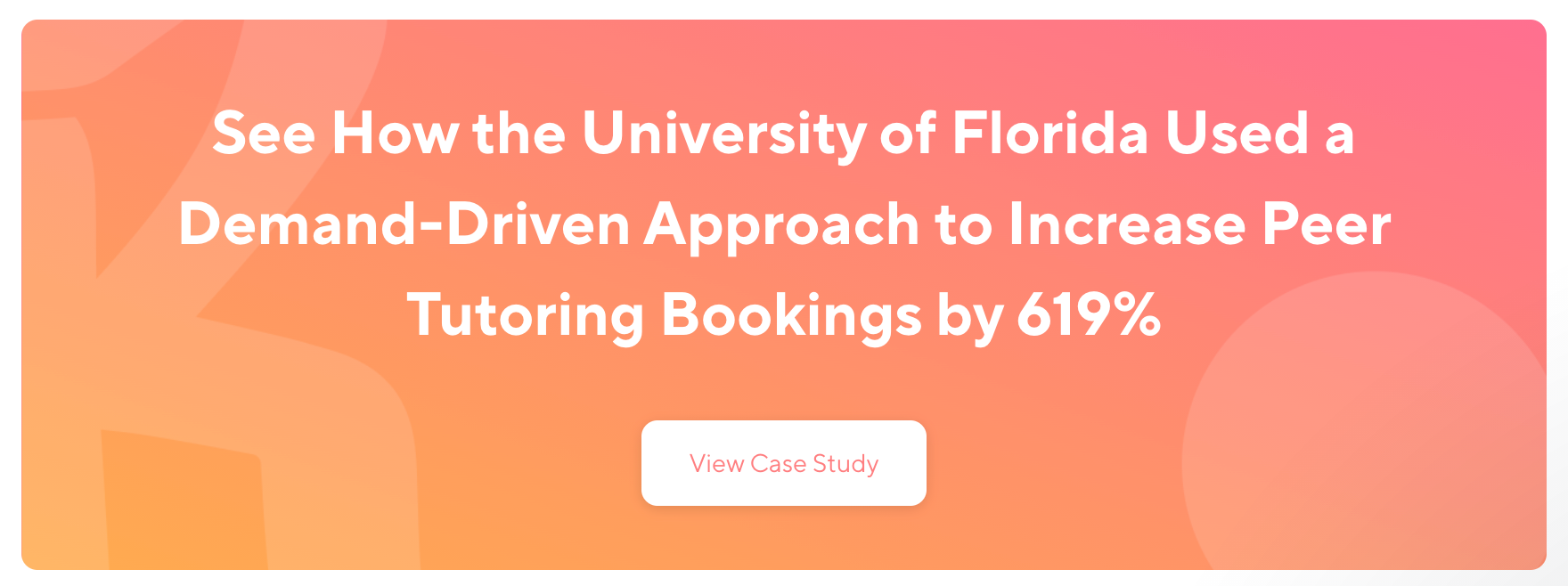4 min read
Why Letting Students Choose Where They Get Tutored Works
By: Priya Thomas on Mar 5, 2021 1:55:35 PM

In thinking about removing constraints in tutoring services, we would be remiss not to explore why letting students decide the location of tutoring is not only possible but incredibly impactful.
Of course, providing space for students to meet is something an institution views as part of its role to facilitate learning and support student success. Fees go towards new buildings or maintaining current buildings so students have spaces designed for learning and gathering. This is helpful. The option of offering no physical location to meet yet having the expectation students meet to work together regularly would, undoubtedly, be met with frustration.
However, as COVID-19 began to necessitate higher education’s quick adaptation to remote and online student support services, the idea of having to meet in a physical location became more flexible. As a result, it’s the perfect time to explore why letting students decide on the location of tutoring works for success. It’s something Knack has believed in from the start, so we’re excited to showcase why it’s worth being flexible in this area for your program moving forward.
Constraining Location Constrains Hours Of Availability
If tutoring services are no longer tied to a physical location, they are also no longer tied to that building’s hours of operation. This opens the door not only to where students can meet to work together, but also when. Thus, letting students decide on a location removes more than one constraint and introduces more options for them to choose from, a bonus for Generation Z.
Why not let students decide on a location? This may not have been considered before the pandemic because an institution wanted to provide a central space for students to meet and, naturally, this space would be tied to some sort of hours of operation. Allowing for other locations, though, and using a platform that facilitates students' ability to receive or deliver tutoring anywhere, creates the kind of flexibility students are looking for, especially as they adapt to learning in a post-COVID world.
Students who have jobs or internships during regular business hours is one group, for example, who would find tutoring more accessible if these services were not tied to a center’s hours of operation. Indeed, with the ways COVID challenged higher ed to adapt to a remote environment, discovering that a dispersed staff can still support students was perhaps a major stride gained in the process. As such, it should now be clear that tutors can also provide support to a student population who is more geographically dispersed than ever before, so this kind of service can continue with minimal disruption regardless of if a tutoring center is open or closed.
Recognizing That One Size Doesn’t Fit All
Letting students decide for themselves where tutoring takes place also shows recognition that one size doesn’t fit all. Assigned locations assume we know where and when students learn best. Although institutions can and should allocate resources towards creating spaces that are comfortable and conducive to learning, making these the only places where learning and support can take place may be a bit short-sighted.
When students can decide on a location for tutoring, they have the ability to choose spaces where they feel most comfortable, where they learn best, or where they can best fit accessing support into their schedule . For example, one student may find they learn better on campus in a space set up for tutoring, while another may prefer the library, and yet another student may feel most comfortable in their own apartment. Students who work, help take care of their family, or travel for either of these responsibilities may be more likely to make use of tutoring support if they knew it could take place online without much hassle.
Indeed, letting students decide the location of tutoring helps them become a more active participant in the overall process of seeking support. Not only are they going to be more comfortable during the session itself, they will also be empowered by their involvement in the decision of where support is delivered. By using technology to power your tutoring efforts, you can collect high-quality program data even as students conduct tutoring in multiple locations and/or online. With the right technology, you can seamlessly move to online-only tutoring when classes are remote and easily add campus locations back once in-person classes start up again.
With this approach, you have the ability to make the whole campus your tutoring center and be ready to adapt for any challenges that come your way. Thus, when students have the ability to choose a location for tutoring, it frees up the student as well as the institution in how these services can be delivered and received.
Understanding that Resources are Better Than Requirements
While a center with dedicated space for tutoring can be very helpful for certain students, having this be the only location where tutoring is allowed to take place can be a barrier for other students to get the help they need. Letting students choose where they meet suddenly ensures that every student will always be able to find a time and place that works for them, since they are making those decisions.
It’s true that a set location may not be a big barrier to traditional students who live on campus and attend mostly in-person classes. However, especially in a post-COVID world, we know that this is not the case for everyone. Even students who do live on campus may have remote or hybrid classes and may have taken on additional work responsibilities to meet their financial needs. Thus, flexible tutoring options can help keep them afloat as they navigate these changes.
In addition, it’s important that campuses interested in supporting key student populations like online learners, transfer students, or student-athletes consider this kind of flexible learning. Balancing work, internships, family, and other responsibilities, these students are already accustomed to using modern tech-powered services that fit into their busy schedules. Commuter students who are unable to travel to campus for tutoring due to scheduling, inclement weather, or COVID closures will find tutoring more accessible if travel to campus is removed as a barrier to receive this support. Lastly, removing a set location as a barrier in tutoring also opens the door for more students to work as tutors as a way to earn an income and gain leadership experience.
Related Posts
Why Letting Students Choose When They Meet for Tutoring Works
A timeless trait of college students that persists decade after decade is that they are not 9-5 creatures. Students are often portrayed as night owls...
Why Certain Students Don’t Use Tutoring
It often seems as though the students who would benefit the most from using tutoring are the same students who are least likely to seek it out.
Why Letting Students Request Help in Any Course Works
Removing constraints in the student/tutor experience is a failsafe way to expand the reach and impact of this critical peer learning experience.